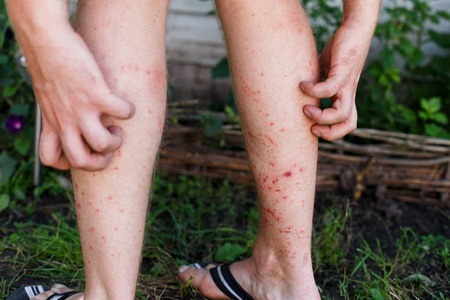It can be infected after 10 seconds of contact, and the Chinese disease control will remind you repeatedly.
Recently, the spring is blooming and the temperature is rising. Are you planning to take equipment to enjoy the flowers and step on water to catch shrimps?
Recently, China CDC has successively issued reminders to pay attention to the prevention of schistosomiasis.

What is schistosomiasis?
Schistosomiasis is an infectious, endemic and natural parasitic disease caused by Schistosoma japonicum parasitic on humans or mammals, and it is a neglected tropical parasitic disease that is prevalent all over the world.
Schistosomiasis japonica, caused by Schistosoma japonicum infection, is prevalent in China, which belongs to legal class B infectious disease. If it is not treated in time or cured, the liver and other organs will be damaged in the late stage, leading to portal hypertension, hepatosplenomegaly, ascites and other symptoms, and people will become skinny and have a bulging belly, so it is also called "big belly disease".
Contact for 10 seconds can cause infection.
Schistosoma japonicum is a kind of trematode parasitic in vertebrate blood vessels, also known as Schistosoma japonicum. There are seven kinds of schistosomiasis that can parasitize human body and cause diseases, namely, Schistosoma japonicum, Schistosoma mansoni, Schistosoma aegypti, Schistosoma intermedium, Schistosoma meyeri, Schistosoma malayi and Schistosoma guinea. Among them, the first three are the most widely distributed and the most harmful.
The development of Schistosoma japonicum can be divided into seven stages: egg, metacercaria, mother metacercaria, daughter metacercaria, cercaria, larva and adult, among which cercaria can infect human body. Cercariae can invade the human body after contacting the human body surface in water. Experiments have proved that host animals can be infected as long as they contact cercaria for 10 seconds.
Blood sucking worms are different from schistosomiasis.
When people talk about bloodsuckers, they often refer to leeches, also known as leeches, which are ectoparasites that feed on blood or carrion. It is long, flat and slightly spindle-shaped, and there are two suction cups in front and back that can be attached to human and animal body surfaces. Leeches live in paddy fields, rivers, paddy fields, lakes and marshes, ditches and shallow polluted pits and ponds, and are distributed all over China, with many kinds.
How to prevent and treat schistosomiasis?
How to prevent schistosomiasis?
The direct cause of infection with Schistosoma japonicum is contact with water containing Schistosoma japonicum cercariae (epidemic water). Therefore, the key to avoid infection is not to touch the water that may contain Schistosoma cercariae and to use water safely.
When production and life must be exposed to epidemic water, you can wear protective articles (rubber gloves, rubber shoes, rubber clothes, rubber pants, etc.), apply protective cream (agent) and take preventive medicine to prevent schistosomiasis infection.
How to treat the infection?
When you inevitably come into contact with epidemic water, have symptoms such as fever or leave the water body for one month, you should take the initiative to go to schistosomiasis prevention and control institutions or disease prevention and control institutions for examination for diagnosis and treatment.
If the infection is confirmed, praziquantel is the only oral anti-schistosomiasis drug widely used in schistosomiasis endemic areas with high efficiency, low toxicity and convenient use. Follow the doctor’s advice when taking medicine and strengthen follow-up.
At the moment when spring is in full bloom, you must be well protected when traveling!
Source | Beijing Daily Comprehensive China CDC
Zhao Xi
]